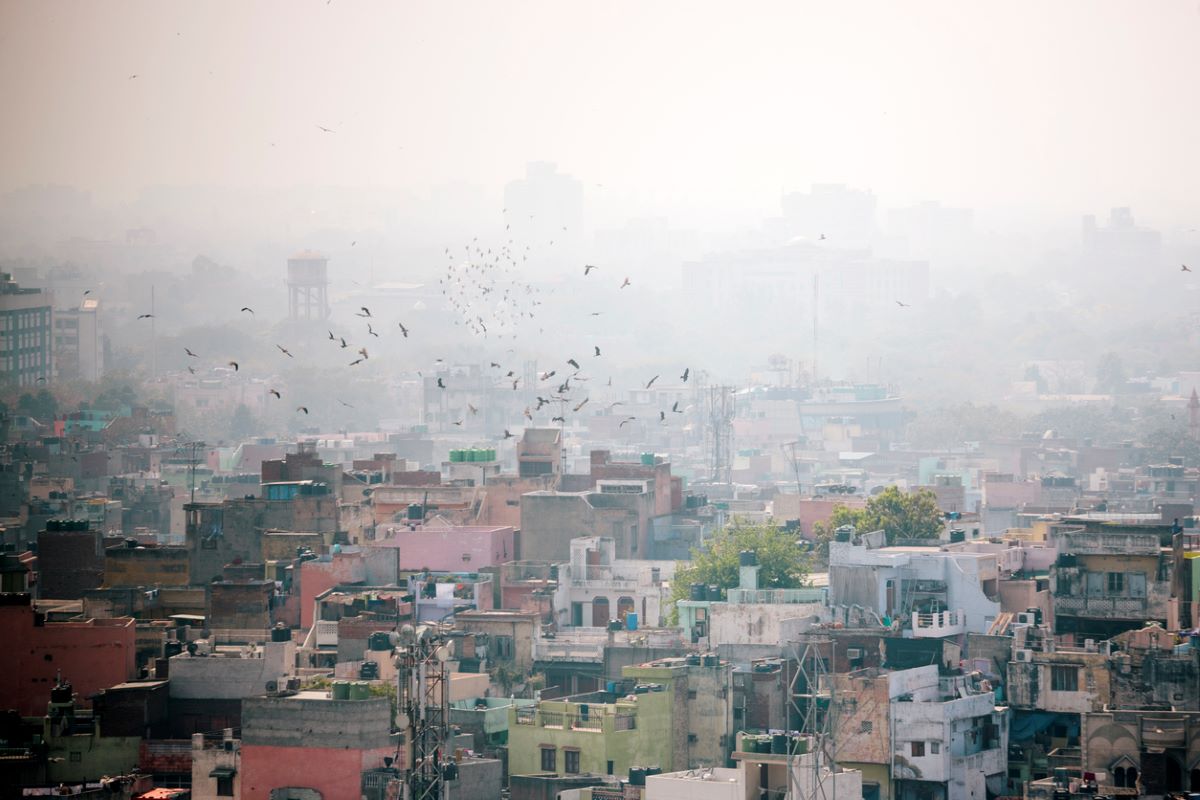India assumes Chair of Asian Disaster Preparedness Centre
India and eight neighbouring countries including Bangladesh, Cambodia, China, Nepal, Pakistan, Philippines, Sri Lanka and Thailand are the founding members of ADPC
The NCR has suffered the most with Ghaziabad being the most acutely affected. Delhi, Faridabad, Noida, Greater Noida, and Gurugram were among the worst during the recent winter in terms of peak pollution. Hence the CSE’s conclusion calls for reflection ~ “Peak pollution was alarmingly high and synchronized, despite large distances within the regions ~ especially in the northern and eastern plains.”

representational image (iStock photo)
Pollution in India attained “high levels” during winter, the salubrious season that has just gone by. If the survey conducted by the Centre for Science and Environment (CSE) is any indication, the pollution level had “spiked and stayed elevated with varying intensity” between 15 October 2021 and 28 February 2022.
Though the overall regional average of particulate matter (PM 2.5) was lower than the previous winter in most regions, the “winter smog episodes” registered severe spikes in several parts of the country. It thus comes about that six towns in Bihar are mentioned among the top 10 most polluted this winter, with Siwan and Munger leading the statewise pollution graph.
The problem has spread from the east to the northern parts of the country. Ghaziabad, Delhi, Faridabad and Manesar have been ranked third, fifth, seventh and tenth, respectively, in the list. The fine print of the survey must be that pollution is almost endemic in this country. Although the seasonal average in the smaller cities of Bihar rivals the mega-cities of the National Capital Region, their peak pollution during smog is comparatively milder.
Advertisement
The NCR has suffered the most with Ghaziabad being the most acutely affected. Delhi, Faridabad, Noida, Greater Noida, and Gurugram were among the worst during the recent winter in terms of peak pollution. Hence the CSE’s conclusion calls for reflection ~ “Peak pollution was alarmingly high and synchronized, despite large distances within the regions ~ especially in the northern and eastern plains.”
No less alarming is CSE’s caveat that winter pollution is not limited to mega cities or to one specific region. It is now a widespread national problem that “requires urgent and deliberate action on a national scale. This requires quicker reforms and action in key sectors of pollution ~ vehicles, industry, power plants and waste management”. This, it is hoped, “will bend the annual air pollution curve and daily spikes”. This would suggest that pollution gets aggravated almost each day.
The PM 2.5 winter average of the eastern region is more than thrice the average of cities in southern India. From the peak 24-hour PM2.5 level perspective, the cities in northern India have recorded the highest daily pollution levels. The National Capital Region of Delhi remains the “most polluted sub-region”. Its worst days are said to be five times the average.
The data on winter pollution in Kolkata is equally grim. The level of Particulate Matter (2.5) in the city’s air was around 2.5 times the nationally permissible limit and ten times the limit set by the World Health Organisation, according to the CSE survey. PM2.5 are said to be the most dangerous of all air pollutants.
Not the least because they can enter the lungs and lead to a battery of critical ailments, including cancer. The fine print of the CSE’s survey must be that the air is decidedly polluted from Kolkata in the east to the country’s capital in the north and further afield.
Advertisement